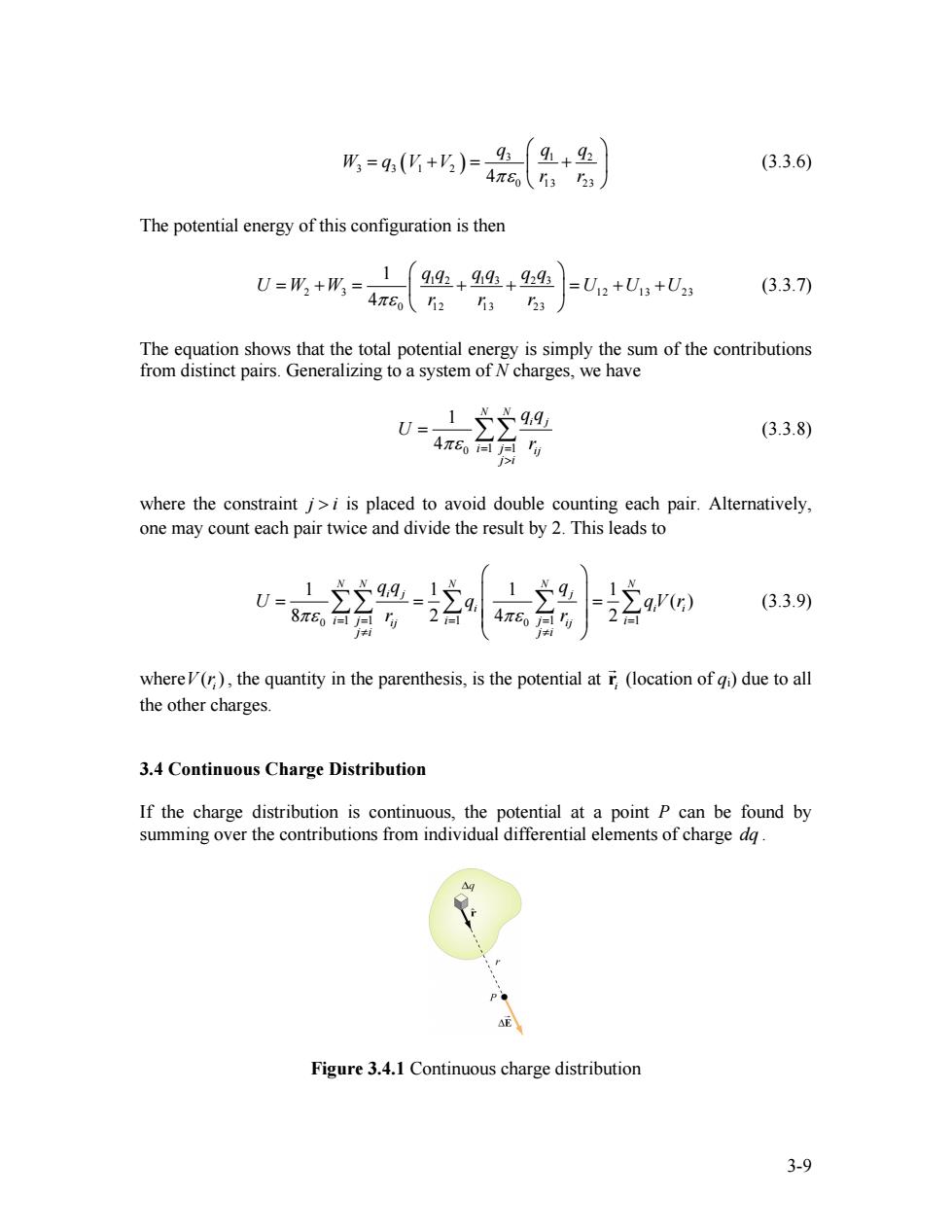正在加载图片...

4+2 W=9+)=46a (3.3.6) The potential energy of this configuration is then U=W2+W3=- 1 9192+949+9294s =U2+U13+U23 (3.3.7 π8o12 1323 The equation shows that the total potential energy is simply the sum of the contributions from distinct pairs.Generalizing to a system of N charges,we have U=15949 (3.3.8) 4π台点 j> where the constraint j>i is placed to avoid double counting each pair.Alternatively, one may count each pair twice and divide the result by 2.This leads to 2 qV(r) (3.3.9) 8π台点有 whereV(),the quantity in the parenthesis,is the potential at r (location of gi)due to all the other charges. 3.4 Continuous Charge Distribution If the charge distribution is continuous,the potential at a point P can be found by summing over the contributions from individual differential elements of charge dq. E Figure 3.4.1 Continuous charge distribution 3-9( ) 3 1 2 3 3 1 2 0 13 23 4 q q q W q V V πε r r ⎛ ⎞ = + = ⎜ + ⎝ ⎠⎟ (3.3.6) The potential energy of this configuration is then 1 2 1 3 2 3 2 3 12 13 23 0 12 13 23 1 4 q q q q q q U W W U U U πε rrr ⎛ ⎞ = + = ⎜ + + ⎟ = + + ⎝ ⎠ (3.3.7) The equation shows that the total potential energy is simply the sum of the contributions from distinct pairs. Generalizing to a system of N charges, we have 0 1 1 1 4 N N i j i j ij j i q q U πε = = r > = ∑∑ (3.3.8) where the constraint j > i is placed to avoid double counting each pair. Alternatively, one may count each pair twice and divide the result by 2. This leads to 0 0 1 1 1 1 1 1 1 1 1 ( ) 8 2 4 2 N N N N N i j j i i j ij i j ij i j i j i q q q U q πε = = r r = πε = = ≠ ≠ ⎛ ⎞ ⎜ ⎟ = = = ⎜ ⎟ ⎝ ⎠ ∑∑ ∑ ∑ ∑ i i qV r (3.3.9) where ( ) , the quantity in the parenthesis, is the potential at V ri i r G (location of qi) due to all the other charges. 3.4 Continuous Charge Distribution If the charge distribution is continuous, the potential at a point P can be found by summing over the contributions from individual differential elements of charge dq . Figure 3.4.1 Continuous charge distribution 3-9